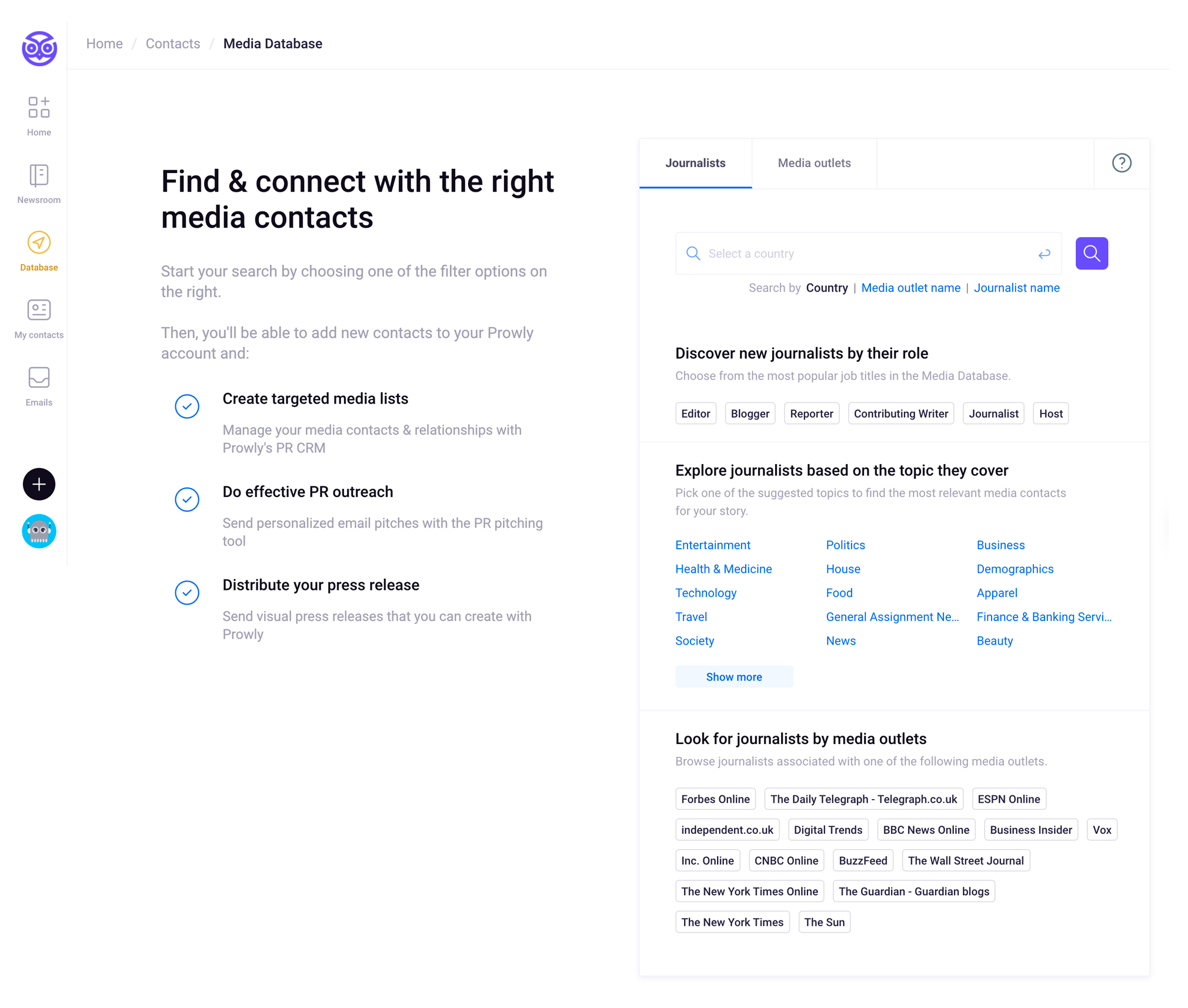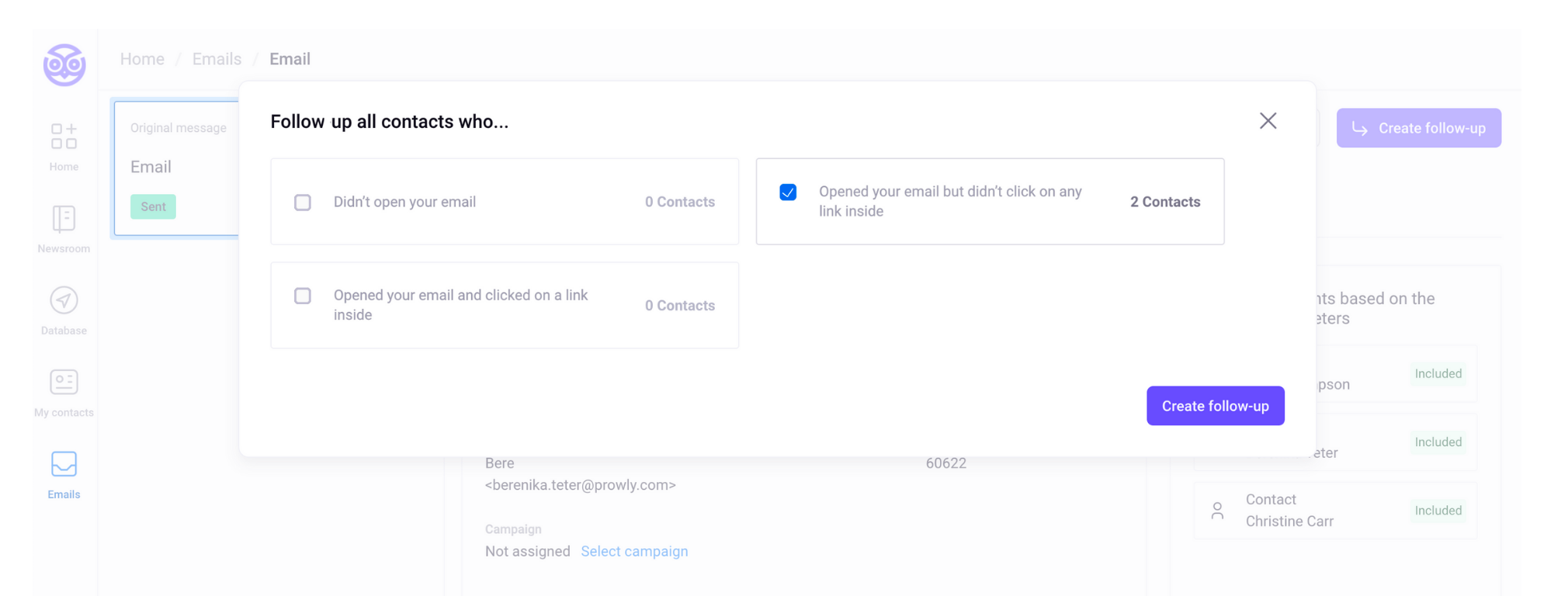In the realm of PR outreach, probability theory has little to do with the outcome. You can send hundreds of media pitches and see no publications, while a few targeted outreach efforts can help you get some impressive coverage.
Databox surveyed PR professionals and found that for the majority of PR pros only 10% of their media pitches actually make it to press.
While this may sound discouraging, as we can see, some PR pros actually get 50%+ success rate, so there must be something you can do about writing a media pitch that can get you that coverage.
This post will uncover the key make-or-break factors that are likely to give a boost to your media outreach efforts.
What is a Media Pitch?
An understanding of the very nature of a media pitch will guide your pitching efforts in the right direction.
A media pitch is essentially an email you send to relevant media contacts and publications (journalists, reporters, editors across digital or print media outlets) so that they decide to cover it. This pitch letter should only include the most important details that can grab their attention:
The lead: an enticing hook that shows why your story is newsworthy and deserves media coverage. Call-to-action: this is where you specify what it is exactly you want the reporter to do with your proposal — run an interview, write a review, integrate your data into their existing coverage, etc. Value proposition: an explainer of how your story (data, piece of news, etc.) adds value to what the journalist is already covering and why they should be interested in what you’ve shared. It can have to do with unique data, unattainable sources, curious industry cases, etc.Typically, we should also list the closing as a key part of a media pitch, but it’s pretty straightforward.
Christopher Elliott, an avid HARO (Help a Reporter Out is a platform that helps journalists find new sources) user and a columnist for Washington Post, Forbes and USA Today, shares which answers get a chance to be featured in his articles:
The easiest way to get into one of my articles is to read my question carefully and answer it in simple language. Often, sources start with their messaging — they have a product or service to sell — and try to squeeze a product mention into the response. That results in a lengthy answer filled with buzzwords in which they argue that I should include their company. But it doesn’t answer the question.If you start by answering the question, keep your answer short and written in simple English, you have an excellent chance of being included in the article.
Christopher Elliott
How to Write a Media Pitch and Get It Right
You may think that now you’re all armed to go and write the perfect media pitch, but you’re wrong. The thing is, the very first thing journalists will see is neither your lead nor your value proposition.
If you want them to open your email and be awed by your proposal, you have to get the first impressions right. And these impressions should be targeted at the right people.
#1. Go Targeted in Your Media Pitching
If you’re asking how to contact news media with a story, you should instead be asking whom you should contact.
Your media outreach will only be successful if you pitch to the right people.
The media landscape is filled with journalists who cover particular topics. It’s called beat reporting, or, to put it simply, specialization. Instead of sending your email to a general email address, you should outreach to a relevant journalist who’s already covering areas associated with your media pitch.
You should, therefore, prepare a list of super-targeted journalists, get their emails, and press the “send” button.
While you can spend hours doing this manually, you might as well make use of tools like Prowly (essentially, an extensive media database with lots of extra features) that help you to:
Uncover relevant media contacts.
Prowly will even offer media contact recommendations based on your press release. This post further elaborates on how to find relevant journalists.
Get their names right.Sometimes when you’re exploring relevant journalists manually, you can end up getting their names wrong, as often in social media, for instance, people use different names.
Create various media lists you can always reuse for future media pitching.Instead of sending your media pitch to each journalist individually, you can scale up and automate this process with tools like Prowly by sending a pitch to an entire media list in one go. The journos will see your pitch as sent directly from your email.
#2. Build Ties With the Media Contact
If you don’t want to sound generic in your hi’s, you shouldn’t simply research what the journo writes about. Deep-dive into their interests — check their social media (Twitter is journos’ favorite spot for sharing views, opinions, and works) and publications — to show that you’ve done your homework and that they aren't the gazillionth person who’s receiving your media pitch.
Mentioning that you can share data that counters their argument in an article they published back in 2020 is a good strategy.
Go easy on getting too personal, though, as you don’t want to sound like a stalker (the “Hey, I had the same dog as you when I was a kid” message will get their attention, but in the wrong way).
#3. Make a Good First Impression
Once the research part is over — you’ve created your super-targeted media list and explored all avenues for adding a personal touch — it’s time to grab their attention.
The very first thing a journalist sees when they receive your media pitch is your email.
If you want to be taken seriously (and make sure your email even has a chance of being opened), don’t send your pitch via sweetwitch669 @yahoo.com. Use a reliable and authoritative email address associated with your company.
Then, the next thing they see is the subject line. It should instantly grab their attention by having the following elements:
Mention your hook: the subject line should reflect what it is they will see if they open the email. Show that you have something newsworthy, unique, innovative, and/or mind-blowing to share. Send an authority signal, or imply that you have some credible data/story (use words like report, study, research, success story, etc.) Be short and to the point. Keep in mind that there is a space limit, and your lengthy subject line might be truncated at the most important word. Research shows that subject lines with a 60-character or 9-word limit get the highest open rates.According to extensive research run by Fractl, all subject lines can be divided into four categories:
1. Statistic-Based
Semrush favorites, statistic-based subject lines imply media pitches that contain unique data.
Example: “75% of marketers don’t use automation software.”
2. Information Gap
Rooted in the “ information gap theory of curiosity”, these kinds of subject lines serve as teasers, enticing journalists to open an email to find out more. Be careful though, these subject lines can look spammy, and journalists are all-too aware of clickbait tactics — they’re the ones who invented them.
Example: “You won’t believe how many marketers don’t use automation software.”
3. Content Title
These subject lines feature a very straightforward message that essentially sums up your pitch.
Example: “Key findings from a study on marketing automation software”
4. Personalized
Based on the journalist’s personal information, these subject lines have nothing to do with the essence of your media pitch.
Example: “I agree that Ford should have launched an EV truck.”

Fractl’s study found that journalists tend to prefer statistic-based subject lines. After all, they immediately imply that your media pitch features some unique data, and help journalists assess what kind of story they can use this data for before even opening your email.
#4. Maximize the Value of Your Media Pitch Body
If the journalist opened your email, consider half the battle won.
While we already mentioned the main building blocks of your media pitch (the lead, the call-to-action, value proposition, and closing), there are ways you can amplify the impact of your proposal.
Make use of the FOMO factor.
If your story, data, case study, etc. haven’t yet been published elsewhere, definitely mention this. Journalists love to be the first ones to break the news; it’s their job, and most top-tier media outlets only take pitches that are brand new.
Don't shy away from offering your information exclusively to the one journalist who you think might indeed be interested in covering this.
However, sending several “exclusive” pitches might ruin your relationship with the reporters who find out the pitch wasn’t as claimed.
Share data to make your pitch unique.
Unless you’re Tesla sharing that you start (and then stop) taking bitcoin as payment, journalists will hardly be interested in covering any self-promotional or sales-y pitches.
Write your media pitch around data and shift focus from your company or spokesperson to the most valuable thing you can share. Data is about the only surefire way to attract journalists’ attention — by default, it’s unique, potentially newsworthy, and has a storytelling element built into it.
And if you want to make the journo’s job even easier — remember, they are always on a deadline and have thousands of pitches coming in — feel free to go ahead and suggest a story angle right within your data-inspired media pitch. They will appreciate it and will be more likely to give your pitch a go as it will already be wrapped as a holistic idea rather than a collection of separate facts that need to be further analyzed.
Keep the pitch body concise.
No one has time to go through lengthy descriptions and explanations, and definitely not journalists who are bombarded with media pitches on a daily basis.
As much as your subject line and general offer can be compelling, if your email copy exceeds a sound word limit (Fractl’s study sets a best practice at a 200-word limit), this might be a turn-off for the media contact you are outreaching.
If you absolutely need more space to translate your key message, though, make sure not to send over walls of text. Instead, make use of bullet points (not more than four).
After all, a media pitch being sent to a journalist you’re contacting for the very first time is still a cold email, so it has to be approached in a similar way and follow similar patterns.
Media pitch example
Here’s an example of a media pitch sent by the Semrush media relations team, re-created in Prowly:

You can find some top-notch cold email templates and pitch email examples in this post.
Don’t go into spam.
This point may seem like an obvious one, but it would be very disappointing if you do your best to write the perfect media pitch that follows all the best practices, and it just ends up in your media contact’s spam folder.
While you can’t future-proof your media pitch against ever going into a spam filter, there is one thing that will most certainly trigger this unfortunate course of events.
We’re talking about links you include in your pitch email.
With some media pitches requiring several link placements, you should still try to keep their number as low as possible. A single link shouldn’t do any harm, but anything more than one coming from a person without any prior correspondence can already look suspicious both to the email provider and the journalist.
#5. Follow Up Your Media Pitch Letter.
Now, if you’ve done everything right, your email landed in the recipient’s inbox. What’s next?
Next starts the wondering — have they received it? Did they read it? Was the media pitch even opened?
Well, as a PR pro, you should never get to this wondering stage.
The general rule for cold emails like your media pitch is that you really shouldn’t write more than two follow-up emails if you don’t hear back from the media contact.
It’s perfectly normal to have to write any follow-ups at all, but there are ways you can set them up for higher attention-grabbing potential:
Make sure to wait a few days before sending the second and third emails to the same person. They may have been busy working or attending to a personal affair, so let it all breathe a little. Try to add some extra value to your original media pitch. You can approach your story from a different angle or offer a different set of findings. Experiment a little to show the entire range of your proposed story to take this job off the journalist’s shoulders.Once again, tools like Prowly help you manage this workflow by showing which media contacts received your email, who opened and even clicked to read your media pitch. This way, you can split your media list into a few groups and tailor your follow-up efforts to various segments depending on which action they took (or didn’t take) with your email.

Now, Get to Writing a Surefire Media Pitch
While the essence of your story is what really matters, it’s the small things that can make a difference to the success of your media pitch.
So, if you thought that writing a media pitch is only about what you actually write in your pitch body, you’d be surprised.
This level of attention to detail may sound dreary, but the outcomes of a successful PR case will most certainly pay off. Media pitches that hit the target can lead to anything from increased reach and reputational lift to link-building and SEO boost. And platforms like Prowly, specifically designed for PR and Media Management, will take the dreary out of the equation.
Innovative SEO services
SEO is a patience game; no secret there. We`ll work with you to develop a Search strategy focused on producing increased traffic rankings in as early as 3-months.
A proven Allinclusive. SEO services for measuring, executing, and optimizing for Search Engine success. We say what we do and do what we say.
Our company as Semrush Agency Partner has designed a search engine optimization service that is both ethical and result-driven. We use the latest tools, strategies, and trends to help you move up in the search engines for the right keywords to get noticed by the right audience.
Today, you can schedule a Discovery call with us about your company needs.
Source:





